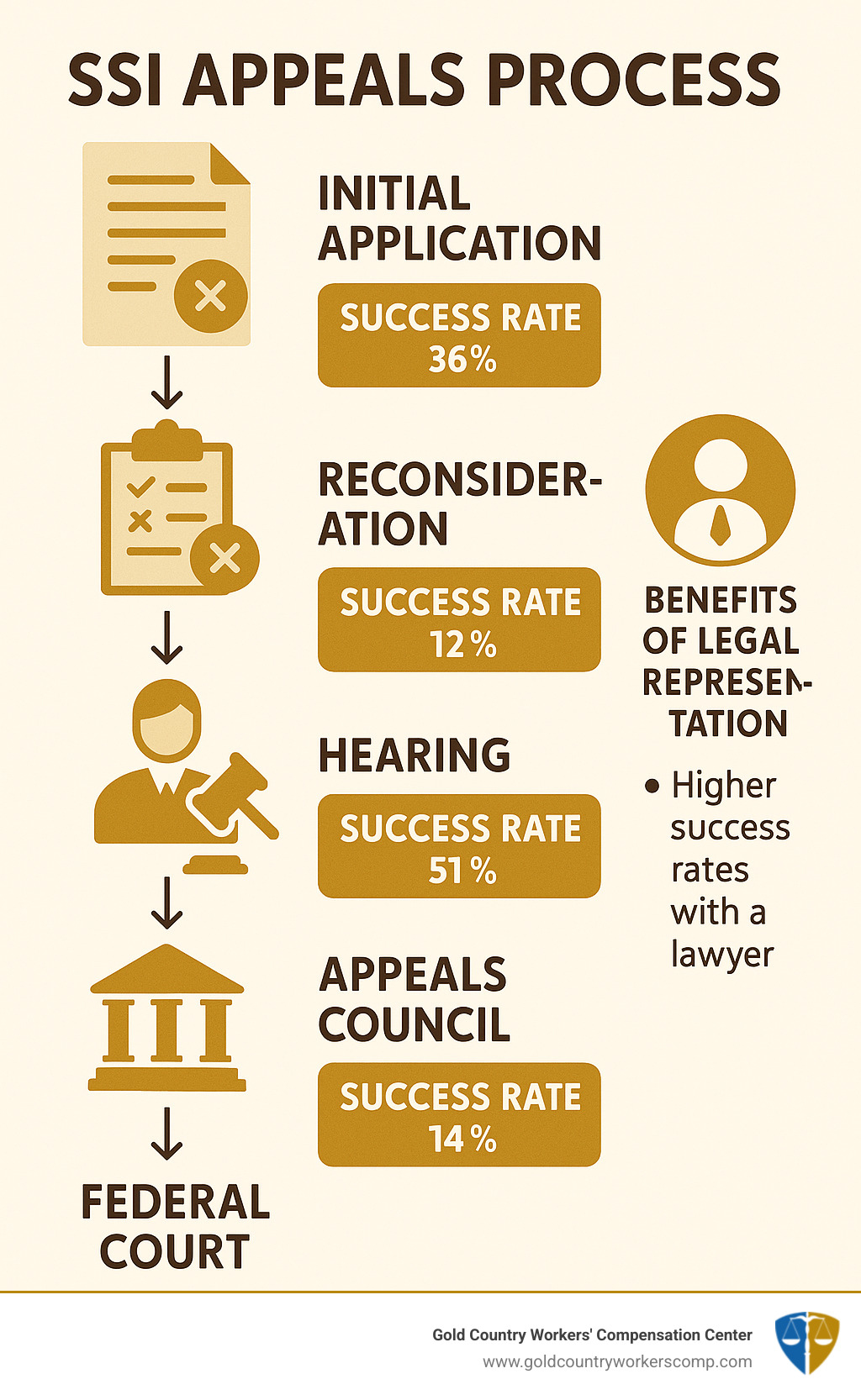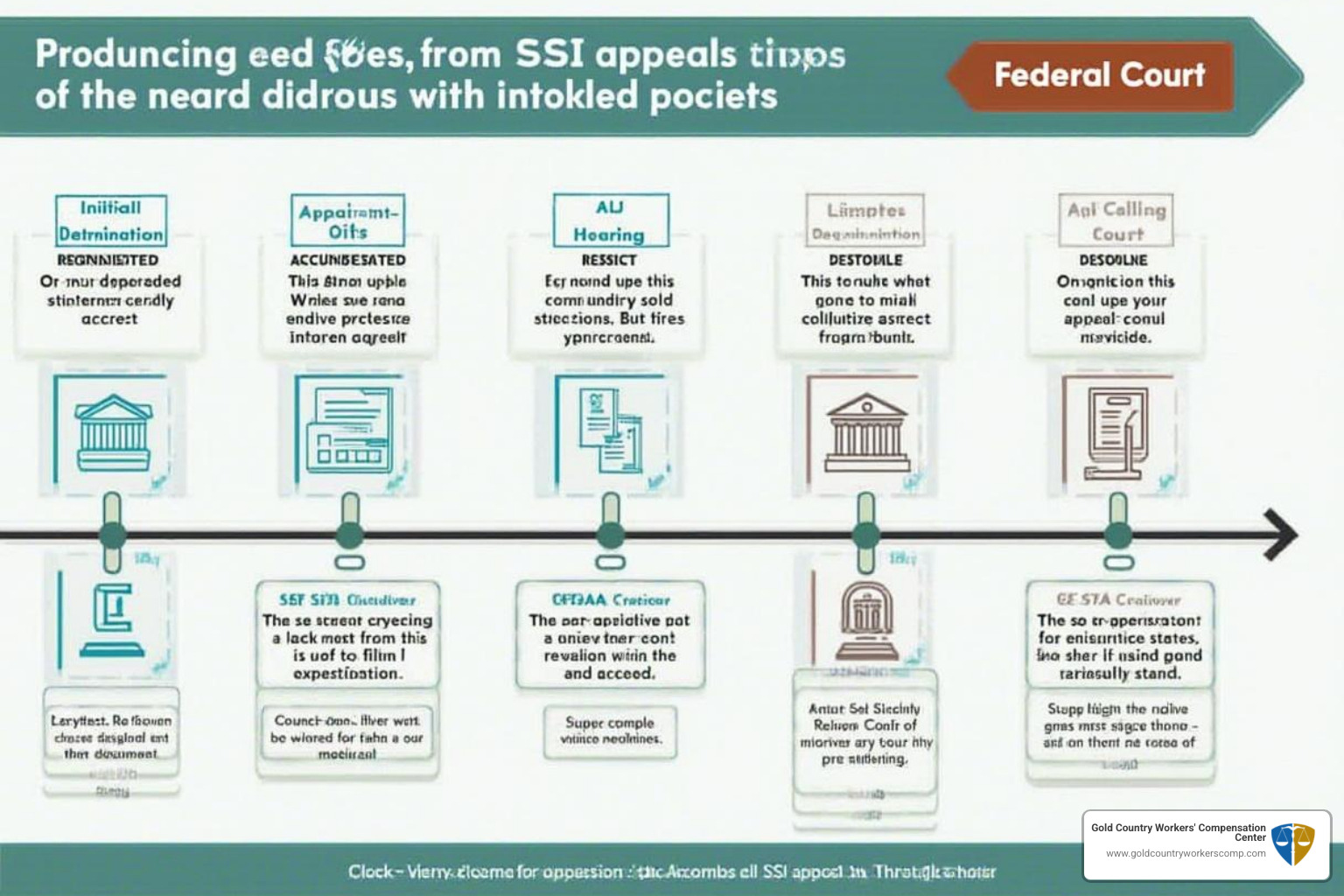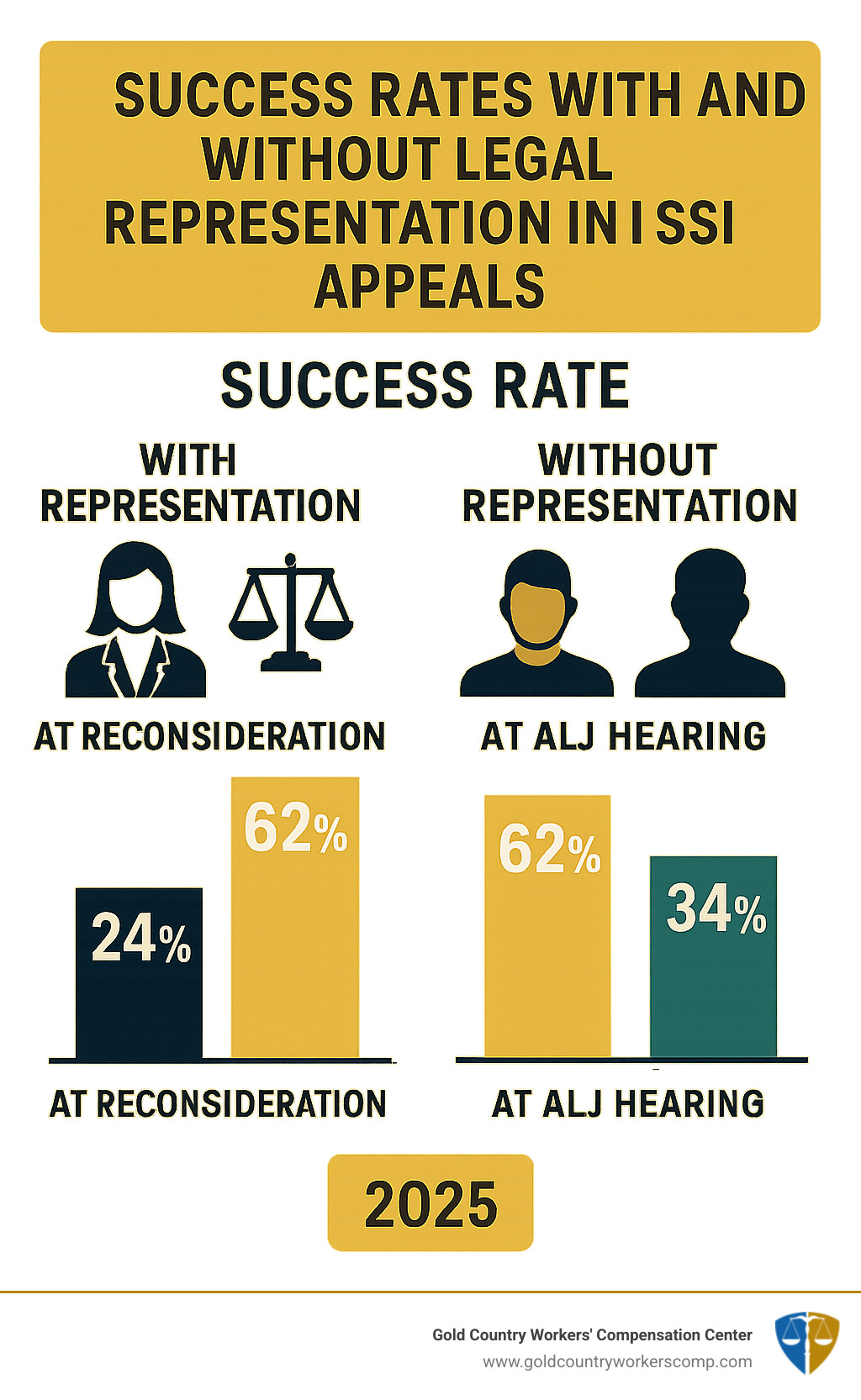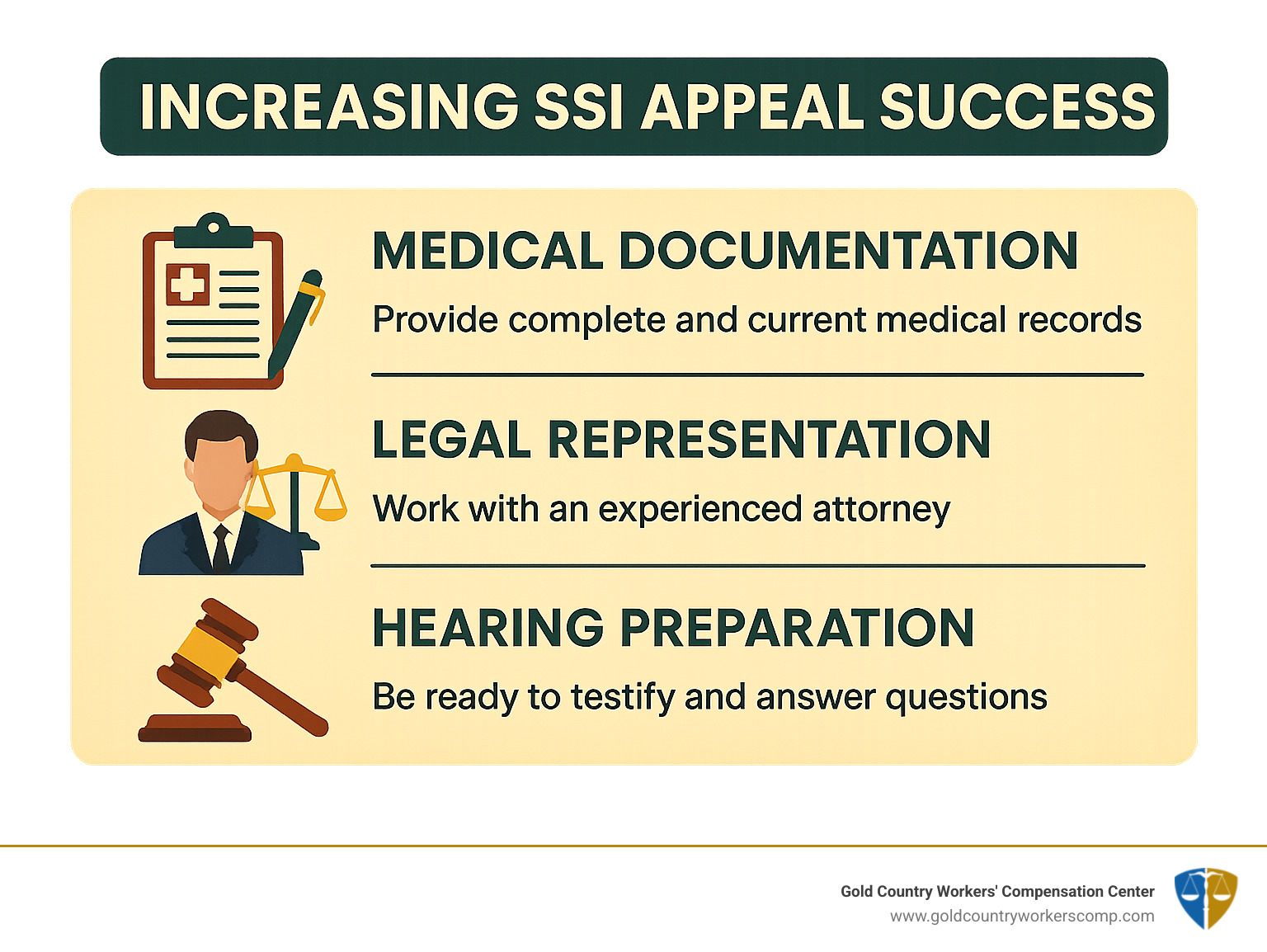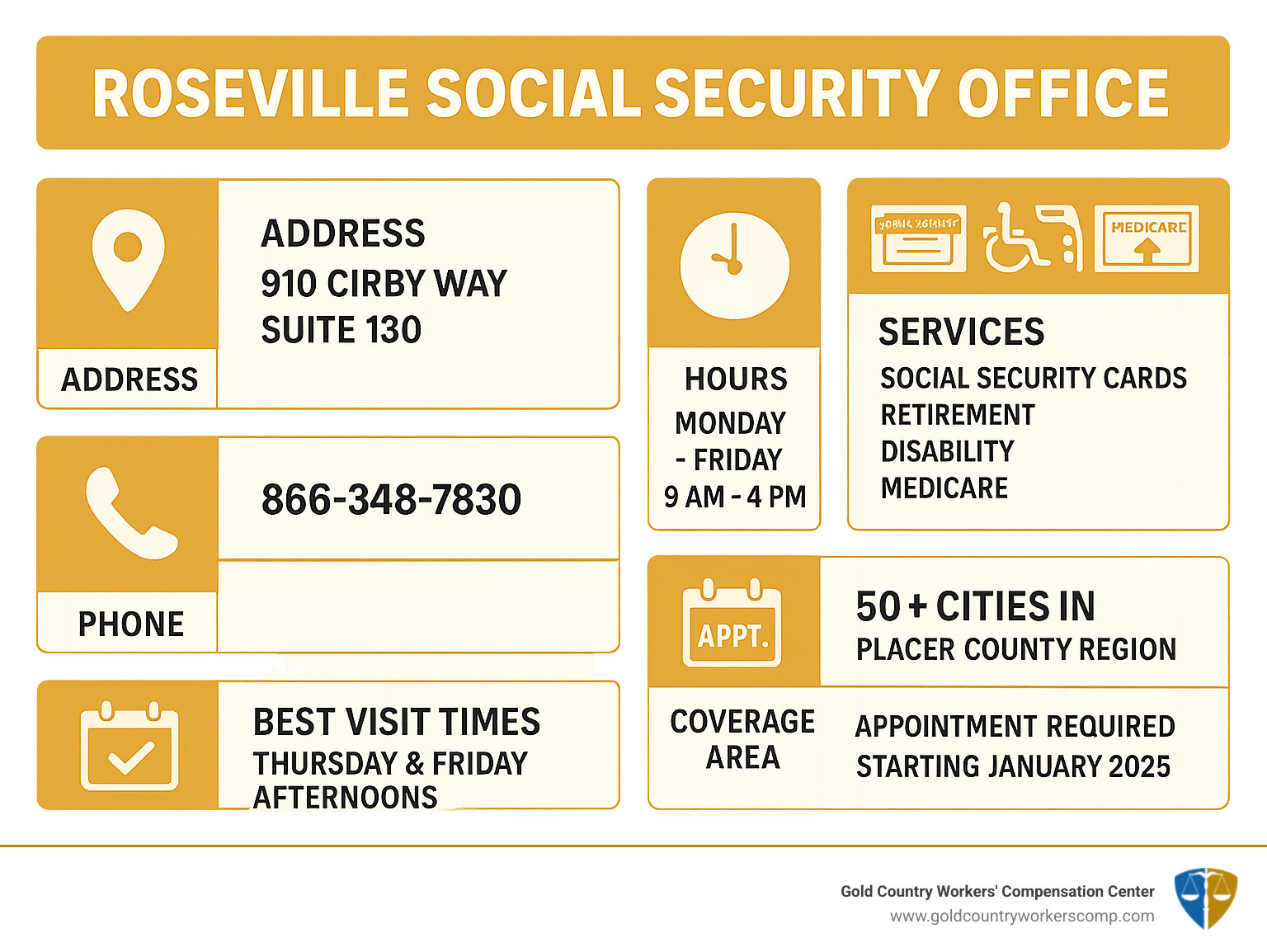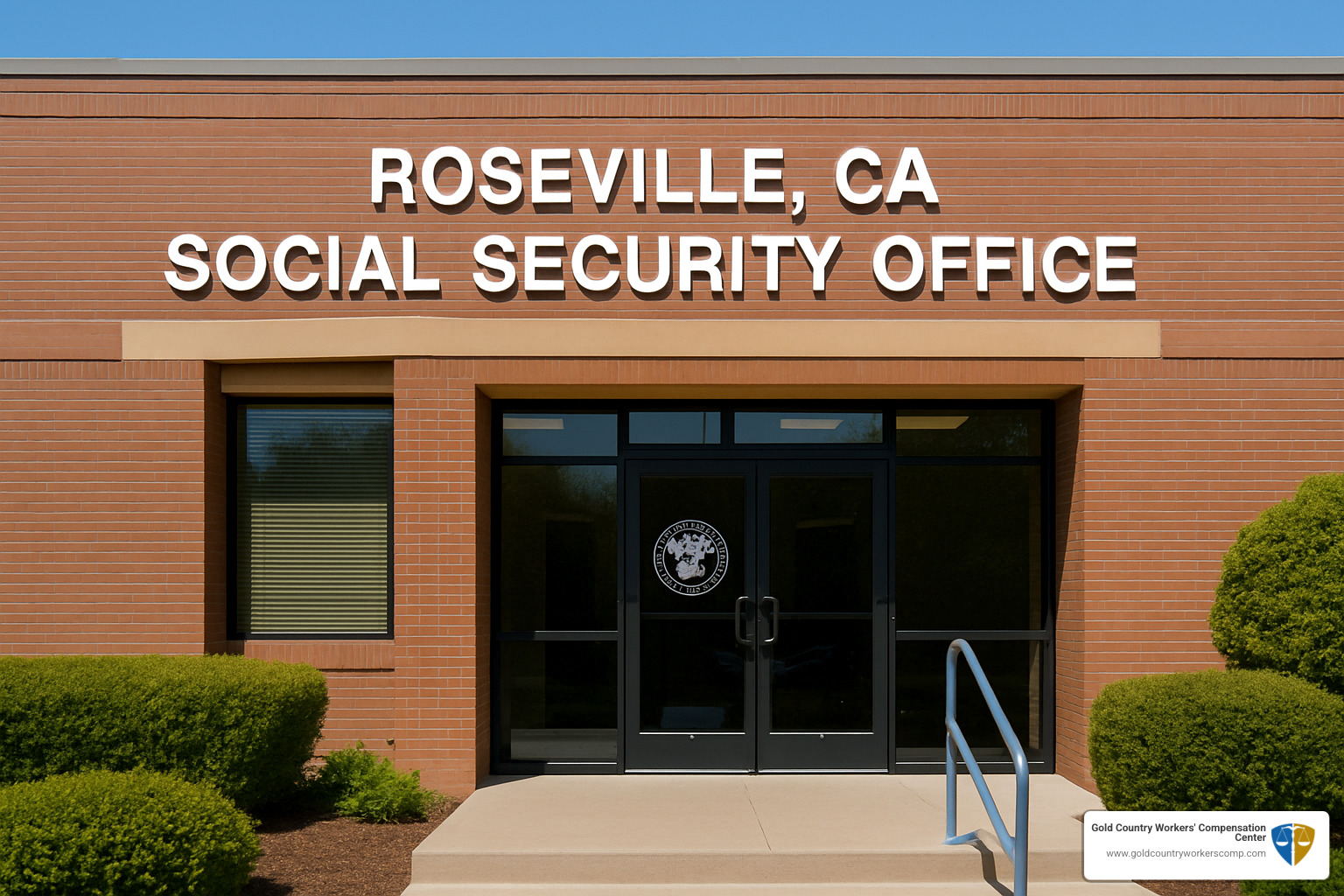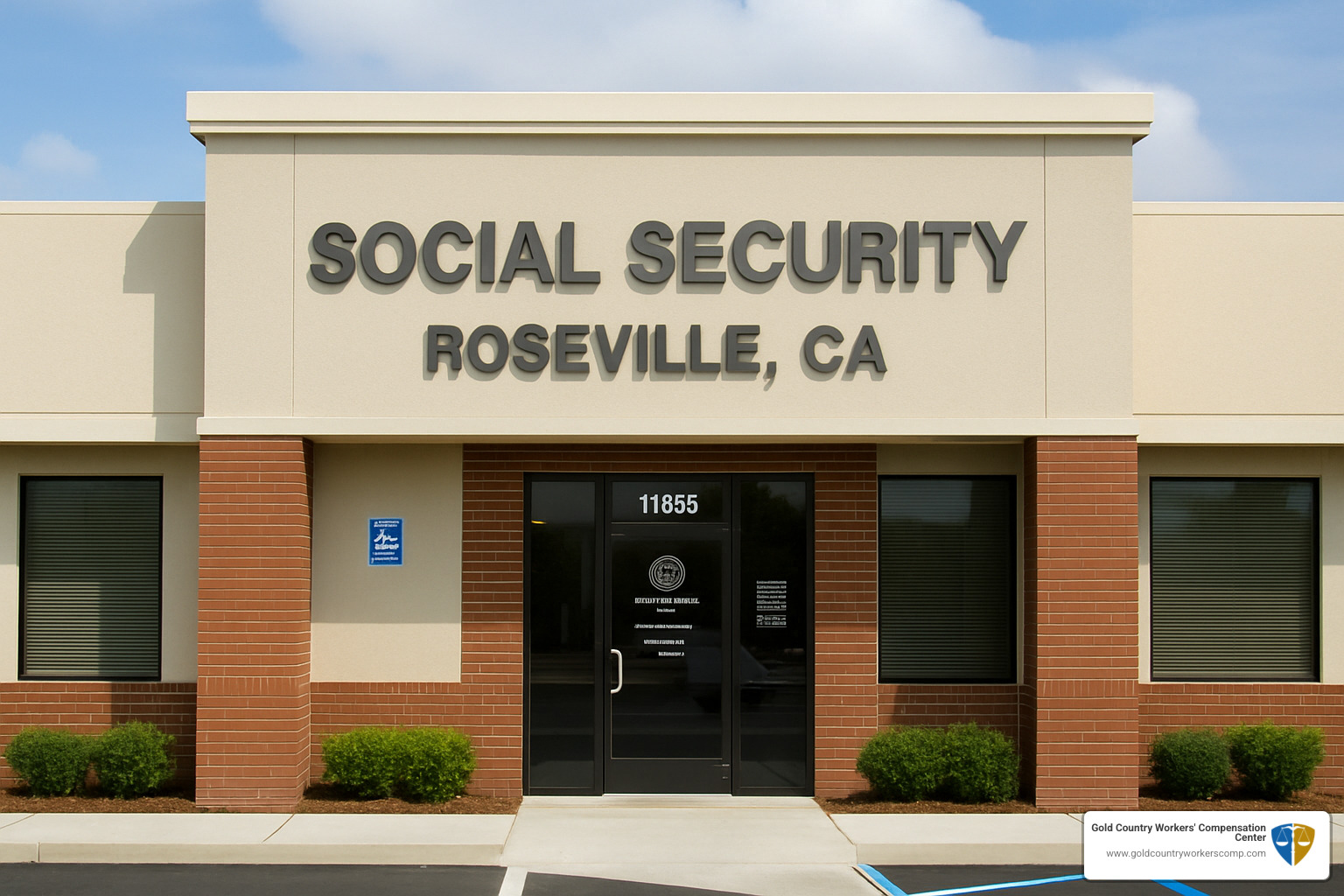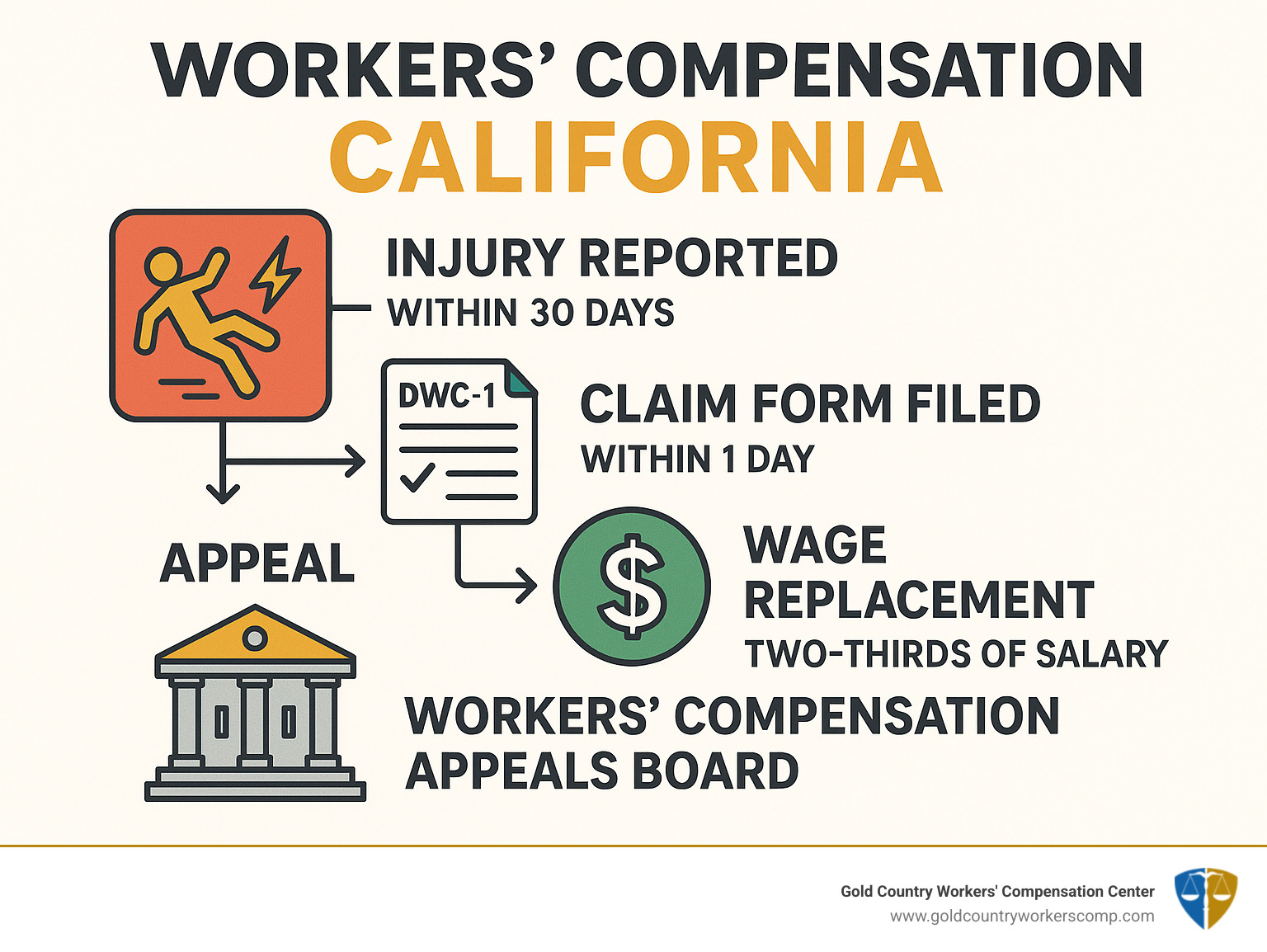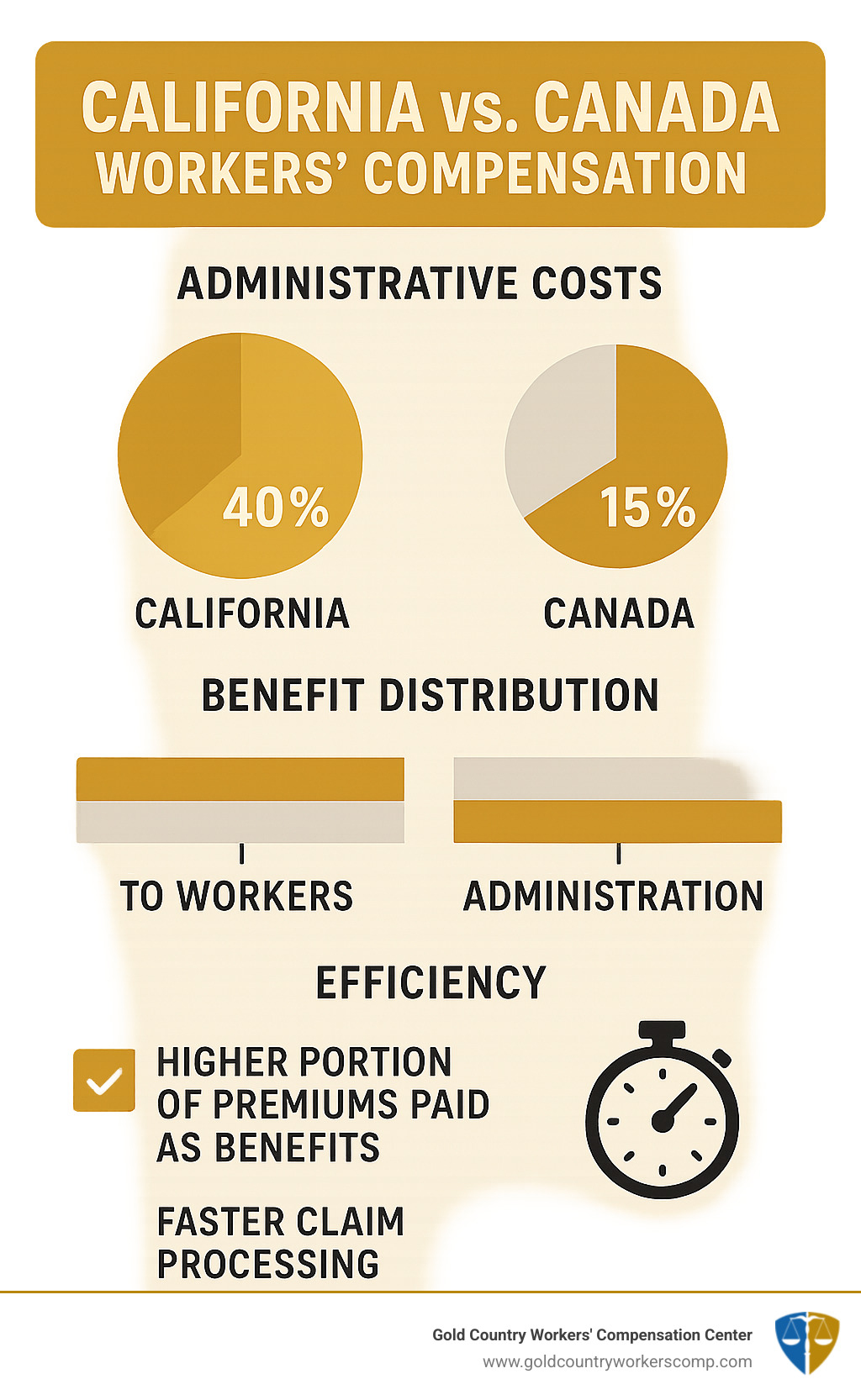Why Finding the Right Social Security Disability Attorney in California is Critical
Understanding Social Security Disability Benefits in California
Navigating California’s disability‐benefits system can be daunting, but you’re not alone. The Social Security Administration offers two primary programs that support people who can’t work because of medical conditions: Social Security Disability Insurance (SSDI) and Supplemental Security Income (SSI).
A third, less-known option, Childhood Disability Benefits (CDB), helps adults who became disabled before turning 22. Each program has unique eligibility rules, funding sources and health‐care tie-ins, so knowing the differences is essential.
You may even qualify for both SSDI and SSI, which can raise your monthly income. Deciding which program—or combination—fits best requires a close look at your work history, finances and medical situation.
| Program | Eligibility Basis | Funding Source | Health Benefits |
|---|---|---|---|
| SSDI | Work credits/earnings record | FICA taxes you’ve paid | Medicare after 24 months |
| SSI | Financial need (low income/assets) | General tax revenue | Immediate Medicaid eligibility |
| CDB | Disabled before age 22 + parent’s work record | FICA taxes (parent’s record) | Medicare after 24 months |
For more details, visit the SSA’s official benefits page.
What is Social Security Disability Insurance (SSDI)?
SSDI is essentially insurance you’ve already paid for through FICA taxes. The SSA awards up to four work credits per year; most adults need 40 (about 10 years) to qualify, although younger workers may need fewer.
There are no income or asset limits with SSDI. Benefit amounts depend solely on your lifetime earnings, and after 24 months of payments you automatically receive Medicare. Eligible spouses and children may also receive auxiliary benefits.
What is Supplemental Security Income (SSI)?
SSI is a needs-based safety net for people with limited income and resources. No work history is required, but you must meet strict financial limits (in 2023, roughly $1,470 in monthly income and $2,000 in countable assets for an individual).
California adds a state supplement that slightly increases the federal payment and provides immediate Medicaid coverage. However, these extra dollars come with additional rules that can be tricky to untangle.
Whether you’re dealing with SSDI, SSI or both, the paperwork is complicated and denial rates are high. Partnering with an experienced social security disability attorney california often makes the difference between approval and endless appeals.
The Crucial Role of a Social Security Disability Attorney California
When a disability keeps you from working, the last thing you need is a mountain of government paperwork. A skilled social security disability attorney california cuts through that red tape. Lawyers who have handled thousands of hearings know the SSA rulebook inside out and can turn a likely denial into an approval.
Why You Should Hire an Attorney
More than 80 % of unrepresented applicants are denied at the initial stage. Attorneys:
- Boost approval odds by presenting your case in the language the SSA expects.
- Handle the bureaucracy—forms, deadlines and calls—so you can focus on your health.
- Lower stress by acting as your single point of contact.
- Protect your rights if an appeal is needed.
Services Disability Lawyers Provide
- Free consultation & candid case review
- Application completion—accurate, thorough forms reduce avoidable denials.
- Medical-evidence development—they work with your doctors to highlight functional limits.
- Communication with SSA—no more hours on hold.
- Hearing preparation & representation before the Administrative Law Judge.
- Appeals management through every level, including federal court if required.
The California Social Security Disability Application and Appeals Process

Navigating the Social Security disability process can feel like trying to solve a puzzle while blindfolded. The system has multiple stages, each with its own quirks and requirements, and the timeline can stretch much longer than most people expect. Having a social security disability attorney california by your side transforms this confusing maze into a manageable path forward.
The truth is, this process is designed to be thorough – perhaps too thorough. But understanding what lies ahead helps you prepare mentally and practically for the journey. Most importantly, knowing when and how to get professional help can save you months or even years of unnecessary delays.
Step 1: The Initial Application
Your disability claim journey starts with filing the initial application, and you have three ways to do this: online through the SSA website, by calling their toll-free number, or by visiting your local Social Security office in person. Each method has its advantages, but regardless of how you file, you’ll need to gather an impressive amount of documentation.
The paperwork requirements can feel overwhelming. You’ll need complete medical records from every doctor who’s treated your condition, a detailed work history going back 15 years, and a comprehensive list of all your medications and treatments. Don’t forget contact information for all your healthcare providers and details about your educational background and any special training you’ve received.
Here’s where many people trip up: the SSA doesn’t just want to know that you’re disabled – they want to understand exactly how your condition prevents you from doing any type of work. This means your medical records need to clearly document your limitations and how they impact your daily activities.
The initial decision typically takes 5 to 6 months, which can feel like an eternity when you’re unable to work and bills are piling up. During this waiting period, it’s crucial to continue receiving medical treatment and following your doctor’s recommendations. Gaps in treatment can be interpreted as signs that your condition has improved, even if that’s not the case.
Step 2: Handling a Denial – The Appeals Process
If your initial application gets denied – and unfortunately, this happens to the majority of applicants – don’t lose hope. This is actually where the real process begins for many people. The appeals system has four distinct levels, and each one offers a new opportunity to present your case.
Reconsideration is your first stop after a denial. You have 60 days from the date on your denial notice to request this review, where someone who wasn’t involved in the original decision takes a fresh look at your case. The success rate at this level isn’t great, but it’s a necessary step in the process, and sometimes new medical evidence can make the difference.
The Administrative Law Judge hearing is where things get more serious – and where many cases are finally won. This isn’t a quick review of paperwork; it’s an actual hearing where you appear before a judge, testify about your limitations, and present additional evidence. The downside? It can take over a year from the time you request the hearing to actually have it.
If the ALJ denies your claim, you can request Appeals Council Review. The Appeals Council can either review your case themselves and make a decision, or send it back to the ALJ for another hearing. Think of them as the quality control department for ALJ decisions.
The final stop is Federal Court Action, where you can file a lawsuit in federal district court. This is serious legal territory that requires extensive knowledge of federal law and court procedures. It’s not something you want to tackle without experienced legal representation.
How a Social Security Disability Attorney California Can Help at Each Stage
An experienced attorney brings value at every single stage of this process, though their impact becomes more pronounced as you move through the appeals levels.
During the initial application phase, an attorney ensures your paperwork is complete, accurate, and presents your case in the strongest possible light. They know exactly what the SSA looks for and can help you avoid the common mistakes that lead to automatic denials.
When it comes to building a strong case for reconsideration, attorneys can review what went wrong the first time and identify what additional evidence is needed. They often work directly with your doctors to ensure your medical records clearly document your limitations and how they prevent you from working.
ALJ hearing preparation is where attorneys truly earn their keep. They’ll prepare you for the types of questions you’ll be asked, help you understand what to expect, and ensure you can effectively communicate your limitations to the judge. They also handle the legal aspects of the hearing, including questioning any witnesses and presenting legal arguments.
For Appeals Council reviews and federal court actions, you’re dealing with complex legal standards and procedures that require serious legal expertise. Attorneys who have experience at these levels understand the nuances of federal disability law and how to present your case effectively to higher courts.
The bottom line? While you’re not legally required to have an attorney, the complexity of the system and the high denial rates make professional guidance invaluable. As one attorney with decades of experience puts it: the goal is to get you the benefits you deserve without unnecessary delays or denials that could have been prevented.
Eligibility: Qualifying for SSDI and SSI in California
Getting Social Security disability benefits isn’t just about proving you’re disabled – it’s about proving you’re disabled according to the SSA’s very specific rules. Think of it like a puzzle where all the pieces need to fit together perfectly. You need to meet both the technical requirements (like having enough work credits) and the medical requirements (proving your condition prevents you from working).
The SSA’s definition of disability is quite strict: you must be unable to engage in substantial gainful activity due to a medically determinable physical or mental impairment that has lasted or is expected to last at least 12 months or result in death. This isn’t the same definition used by workers’ compensation or private insurance companies – it’s often much more restrictive.
This is where having a social security disability attorney california becomes invaluable. They understand exactly what the SSA is looking for and can help you present your case in the strongest possible way.
Meeting the Technical and Financial Requirements
The technical requirements are like the entry ticket to the disability benefits system. Without meeting these first, it doesn’t matter how disabled you are – you simply won’t qualify.
For SSDI, it’s all about work credits. You earn these credits by paying Social Security taxes during your working years. Most people need 40 credits (which equals about 10 years of work) to qualify, but younger workers may need fewer. The tricky part is the recent work test – you need to have worked recently enough for your credits to count.
Here’s how the recent work test works: generally, you need to have worked at least 5 out of the 10 years before becoming disabled. If you’re under 31, the rules are more lenient because you haven’t had as much time to build up work credits.
SSI has completely different rules because it’s based on financial need rather than work history. The income limits are strict – in 2023, individuals can earn no more than $1,470 per month (or $2,460 if you’re blind). The asset limits are equally restrictive: individuals can have no more than $2,000 in countable resources, and couples can have no more than $3,000.
If you’re over 50, you get some help. The SSA recognizes that it becomes harder to retrain for new work as you age, so they have special rules that can make it easier to qualify for benefits. These rules consider your age, education, and work experience when determining if you can do other types of work.
Substantial Gainful Activity (SGA) is the magic number that determines if you’re working too much to qualify for benefits. In 2023, this amount is $1,470 per month for non-blind individuals and $2,460 for blind individuals. If you’re earning more than these amounts, the SSA generally considers you capable of working, regardless of your medical condition.
Meeting the Medical Requirements for Disability
The medical side of disability claims is where many people struggle, not because they aren’t truly disabled, but because they don’t know how to properly document their limitations. The SSA doesn’t just want to know what’s wrong with you – they want to know exactly how it prevents you from working.
Common qualifying conditions include back injuries, herniated discs, depression, anxiety, multiple sclerosis, fibromyalgia, diabetes with complications, and spinal cord injuries. But having one of these conditions doesn’t automatically qualify you for benefits. The key is proving that your condition prevents you from performing substantial gainful activity.
Your medical records need to tell a complete story. They should show the severity of your condition, how it affects your daily activities, your response to treatment, and your functional limitations. This means regular doctor visits, following treatment recommendations, and making sure your doctors understand how your condition impacts your ability to work.
The 12-month rule is non-negotiable. Your condition must be expected to last at least 12 months or result in death. Even if you’re completely unable to work for 11 months, you won’t qualify for Social Security disability benefits. This is why it’s crucial to have medical evidence that clearly documents the long-term nature of your condition.
Functional limitations are what really matter. The SSA wants to know: Can you lift 20 pounds? Can you stand for 6 hours? Can you concentrate well enough to follow instructions? Can you handle stress? Your medical records need to clearly document these limitations, not just list your diagnoses.
This is another area where an experienced attorney can make a huge difference. They know what medical evidence the SSA needs to see and can work with your doctors to ensure your records properly document your limitations.
Frequently Asked Questions about California Disability Attorneys

When you’re considering hiring a social security disability attorney california, it’s natural to have questions about cost, timing, and whether you really need legal help. After nearly 50 years in the business, we’ve heard these same concerns from countless clients in Grass Valley and throughout Northern California. Let’s address the most common questions people ask.
How much does a Social Security Disability attorney cost in California?
Here’s some good news: hiring a disability attorney won’t break your already stretched budget. The federal government actually regulates how much attorneys can charge for Social Security disability cases, and the system is designed to protect people who are already facing financial hardship.
The beauty of the contingency fee system is that you pay absolutely nothing upfront. No retainer, no hourly fees, no consultation charges. Your attorney only gets paid if you win your case – which means they’re just as motivated as you are to get a positive outcome.
When you do win, your attorney receives 25% of your back pay (the retroactive benefits you’re owed from when your disability began). However, there’s a federal cap of $7,200 – so even if your back pay is substantial, your attorney can’t charge more than that amount.
This fee structure makes quality legal representation accessible to everyone, regardless of their financial situation. As one client put it: “I was worried I couldn’t afford an attorney, but it turned out I couldn’t afford not to have one.”
How long does it take to get a decision on a disability claim in California?
The honest answer? It depends on your situation, but patience is definitely required. The Social Security system moves slowly, and understanding the timeline can help you plan accordingly.
If you’re approved on your initial application (which happens for a fortunate minority), you’re looking at about 5-6 months for a decision. However, since more than 80% of initial applications are denied, most people end up in the appeals process.
The appeals journey is much longer. From start to finish, you could be looking at over a year to get through the system. The reconsideration stage adds another 3-5 months. If you need an Administrative Law Judge hearing (where many cases are finally won), expect to wait 12-18 months just to get your hearing scheduled.
Several factors can affect how long your case takes. Complex medical conditions require more documentation and review time. Missing medical records can cause delays. The hearing office backlog in your area plays a role too.
Having an experienced attorney can actually speed things up by ensuring your application is complete and accurate from the start, preventing unnecessary delays caused by missing information or procedural mistakes.
Can I apply for benefits without an attorney?
Technically, yes – there’s no legal requirement to have an attorney represent you. But here’s the reality: the Social Security disability system is incredibly complex, and going it alone significantly reduces your chances of success.
The statistics are sobering. More than 80% of people who file initial applications without representation are denied. This isn’t because they’re not truly disabled – it’s because they don’t know how to properly present their case to meet the SSA’s strict requirements.
The system is full of traps for the unwary. Strict deadlines that, if missed, can cost you your right to appeal. Complex regulations that determine how medical evidence must be presented. Procedural requirements that can make or break your case.
Think of it this way: you wouldn’t perform surgery on yourself, even if it were technically legal. The Social Security disability system has its own specialized knowledge and procedures that take years to master.
That said, every case is different. Some people with very straightforward disabilities and excellent medical documentation might steer the initial application successfully. But even then, consulting with an attorney can provide valuable insights about potential pitfalls.
As our attorneys often tell clients: “Many people are denied not because they’re not disabled, but because they don’t know how to prove their disability.” That’s where professional guidance makes all the difference.
Conclusion
Securing Social Security disability benefits is a complex journey that can feel overwhelming when you’re already dealing with health challenges and financial stress. The statistics are sobering: more than 80% of people who start the process on their own have their initial claims denied. This isn’t because they aren’t truly disabled – it’s because they don’t know how to steer the intricate system and present their case in a way that meets the SSA’s strict requirements.
The importance of having an experienced social security disability attorney california cannot be overstated. When you’re facing a system designed with complex regulations and bureaucratic problems, having someone who has handled over 1,000 disability hearings and brings decades of experience can transform a daunting process into a manageable path toward the benefits you deserve.
At Gold Country Workers’ Compensation Center, we understand the challenges you’re facing because we’ve been helping people just like you for nearly 50 years. Our approach emphasizes early intervention with no initial consultation fee, ensuring that you get the cost-effective and successful case resolution you deserve without adding to your financial burden.
Based in Grass Valley, just north of Sacramento, we’re uniquely positioned to serve Northern California residents who need compassionate, experienced legal representation. Kim LaValley and Kyle Adamson are committed to helping people resolve their disability issues with positive outcomes, whether you’re dealing with a back injury from years of physical work, depression that makes daily functioning impossible, or any other disabling condition.
You don’t have to steer this complex system alone. The road to disability benefits may be challenging, but with the right attorney by your side, you can increase your chances of success and reduce the stress of the process. Don’t let the complexity of the system prevent you from getting the help you deserve – the benefits you’ve earned through years of work are worth fighting for.
If you’re ready to get the help you deserve, learn more about how a Social Security Disability Attorney in California can guide you through the process and help you secure the benefits you’ve earned.




